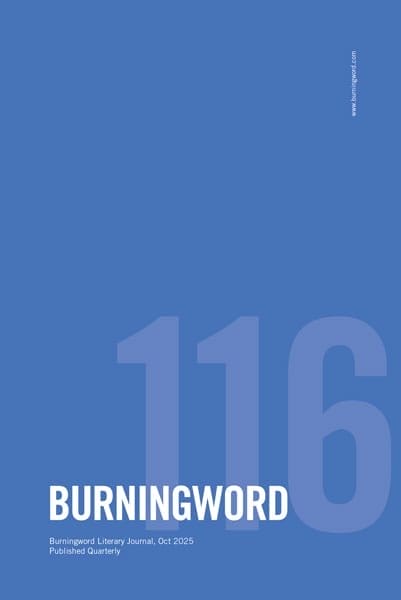April 2018 | nonfiction
This is not a metaphor for anything. I am talking about a very real pungency. Smashed yellow cherries on the concrete sidewalk. It’s check-the-bottom-of-your-shoe season, it’s did-I-step-in-dog-poop season, it’s no-you-didn’t season: it’s Gingko Season.
It’s that one spring in Brooklyn where we finally discovered that the Chinese restaurant on the corner had been using the construction dumpster by our house to get rid of their old fry oil, mouldering baby corn, yellowed tofu corners, slimy strips of chicken fat.
You can’t call 311 on a tree.
It’s the constant whiff of judgment: who threw up here? It’s the smell of some young person’s humiliation: partially-digested macaroni and cheese soaked through with liquor and bile. It would not be an exaggeration to say I always gag when walking under a gingko tree. It would not be an exaggeration to say that I almost always automatically ‘tsk’ when walking under a gingko tree. Its effects are both physiological and psychological.
There is no solution to this problem except to be glad that gingko trees are one of my problems. And anyway, gingko season doesn’t last long: soon the cold air will take the edge off the stench, soon the pulpy sidewalks will be layered over with snow. Soon enough, I could live somewhere else entirely. The gingkos would still be here, steady canopies with a million little fluttering leaf fans. The gingkos would still be here, obstinately performing their ritual above our heads.
by Olivia Dunn
Olivia Dunn is a Visiting Professor of English at Skidmore College and a graduate of the Nonfiction Writing Program at the University of Iowa. Her work has appeared recently in The Pinch Journal, SHANTIH Journal, Tinker Street, The Nervous Breakdown, River Teeth, and McSweeney’s.
April 2018 | Best of Net nominee, fiction
I thought about taking up Art once. Before I met Margery. Before I went into investment banking. Something I picked up in the military during the war. Not a real war. More of a military intervention. The Mongolian Intervention we called it. The gas fields of Northern Mongolian. We were liberating the gas lines there. We did liberate them. Very successfully. Exxon stock went up 15 points. Wall Street gave us a parade.
A bit of art can be a great solace to the human spirit. Especially alone, in a drafty barracks, in a strange land at thirty below, somewhere north and west of the Yangtze. Nothing that unusual, actually. It was quite big back then. Painting-by-Number. That’s where the pattern of what you are to paint, the picture, is already printed on the canvas in very faint blue lines, with dozens and dozens, if not hundreds and hundreds, of little blue numbers inside of them. And you begin to paint. Filling in each little numbered space with the correspondingly numbered pigment. It’s quite systematic. For an art.
I did a very handsome Spaniel I recall, and then a Golden Retriever, 12 by 14, but my favorite was the Old Masterpieces Series, “Recreate the Experience of the Old Masters in Your Own Home,” it said on the box. I did a rather nice BLUE BOY, that’s Gainsborough; a very good MONA LISA, and a passable Van Gogh, because with Van Gogh, for some reasons, I kept slipping outside the lines. There were sunflowers. A big vase of sunflowers. I used up two entire tubes of Cadmium Yellow #17 on that one. Oh, those sunflowers nearly did me in. Sometimes I was tempted to cheat, and smear over some of the numbers, but I restrained myself. I stuck with the rules. To the finish.
You need a great deal of patience to pursue Painting-by-Number. And a very steady hand. Not mine tonight. A young man’s hand. I recommend it, because at the end of the road, when you’ve painted in that last number 17, you have a very fine piece of art, your own Van Gogh, done in your own hand. You’ve sort of re-experienced his suffering. But without having to cut off your ear, of course. No amount of money can buy that. That sense of accomplishment is priceless. It stays with you a lifetime. My very own Van Gogh.
by Charles Leipart
Charles Leipart was a finalist for the 2017 Tennessee Williams Fiction Prize for What Wolfman Knew, Tennessee Williams/New Orleans Literary Festival; What Wolfman Knew is published in the Summer 2017 issue of the Jabberwock Review. His work has appeared in the Bayou Magazine, Burningword Literary Journal, Panolpy Literary Zine, the Eastern Iowa Review, the Scene and Heard Journal, QU Literary Magazine, and Projector Magazine of the University of Greenwich, London UK. Charles is a graduate of Northwestern University, a former fellow of the Edward Albee Foundation. He lives and writes in New York City.
April 2018 | poetry
When I go to places
The seaside
I am already leaving there
Rehoboth Beach
More water than sand
More sky than water
Bones of fish laid bare
A new tableau each morning
Tides take back
All that they lay down
Washing me to white
To bold
To bright
A seagull screams just once
And dissolves in my skull
Naked sun
She milks my pupils
Opalescent to blind
At dawn
I see dead birds
Banking fast from clouds
My cousin Eddie
Arc of his returning boomerang
A spinning, skimming whir
Over the green, the coppery
Glossy mallards
Old pennies for heads
Pumpkin orange feet
Folded under what floats and bobs
At the edges of Camp Brule Lake
Startled flock rising
Quaking the water lilies
Seesaw tipping frogs into leaps
A melee of flaps and squawks
My cousin Vernon now
Boomerang two
Not returning
Arm bent back as an arrow to its bow
One unlucky heartbeat
Twirling into tailspin
A roped corpse to splash
So boys can cheer
And echo echo echo
I am already returning
To Camp Brule Lake
Spilling into Elk Creek
Who pauses and changes her clothes
The Flat
Expanse of silt and limestone
Red shale and watercress
Big enough for two pickups
Nature’s Car Wash
In between cascades
A waterfall at the top
A waterfall at the bottom
Liquid chimes
Teacups resting in their saucers
On top of a walking tray
Treed place
Entombing the cold pools
Where fish can stand still
I step across The Flat
To the other side
Soles on the same level parts of the same stones
Nine steps
I’ve made it
The slippery silt covers me
Cloaked in branches and tangle
Caught without my own feet at the seaside
I dissolve into backgrounds brushed and shaded
Into the shadows of the places who know me
by Virginia Watts
Virginia Watts has been published in The Philadelphia Inquirer, recently in Ruminate Magazine’s Readers’ Notes and her nonfiction story “Marti’s Father” appears in Volume 1, Issue 2 of Ponder Review, Fall 2017. This story has been nominated for a 2018 Pushcart Prize.


